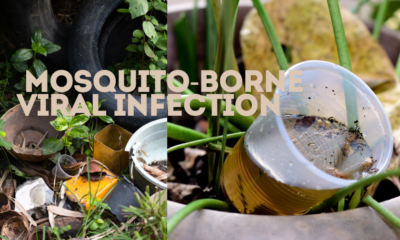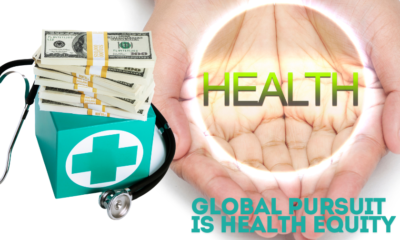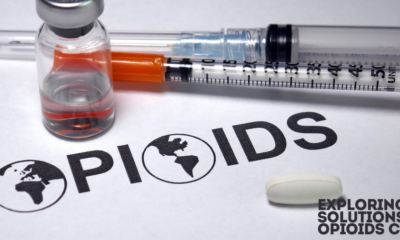Healthcare
HIV/AIDS in 2024: New Advances in Treatment and Prevention

HIV/AIDS continues to be a significant global health challenge, but 2024 has brought new advances in treatment and prevention that offer hope for millions of people worldwide. Recent developments highlight the importance of early diagnosis, the efficacy of antiretroviral therapy (ART), and innovative approaches to service delivery, aiming to curb the epidemic and improve the quality of life for those affected.
Advances in Treatment
One of the most notable advances in HIV treatment is the progress in achieving viral suppression. The World Health Organization (WHO) has emphasized the importance of reaching undetectable viral levels in patients through the consistent use of ART. Achieving a viral load of less than or equal to 1000 copies per mL, commonly referred to as having a suppressed viral load, significantly reduces the risk of HIV transmission, including sexual transmission and vertical transmission from mother to child. As of the end of 2022, 76% of the 39 million people living with HIV were receiving ART, with nearly three-quarters achieving viral suppression, marking a significant step forward in managing the disease and preventing its spread.
The introduction of new guidelines by WHO has further streamlined the treatment process. The updated Consolidated HIV guidelines released in 2023 provide comprehensive, evidence-informed recommendations on HIV prevention, testing, treatment, and monitoring. These guidelines emphasize the rapid initiation of ART and the use of dolutegravir, a medication that has become a preferred first-line treatment due to its effectiveness and fewer side effects. Additionally, these guidelines advocate for differentiated service delivery models, which allow ART initiation outside traditional healthcare settings and reduce the need for frequent healthcare visits for patients doing well on treatment.
Furthermore, the WHO has expanded recommendations on the use of point-of-care technologies for monitoring treatment efficacy, which is crucial for managing HIV, especially in low-resource settings. These advances aim to improve the quality of care and ensure that more people can start and maintain treatment, even in times of service disruptions, such as those experienced during the COVID-19 pandemic.
Prevention Strategies
Prevention remains a cornerstone of the global HIV response. Recent advances in prevention strategies include expanded recommendations for HIV self-testing and innovative prevention tools. Self-testing has emerged as a critical tool for increasing the reach of HIV testing services, particularly among populations that may not access traditional healthcare settings. WHO encourages countries to promote HIV self-testing as part of broader prevention strategies, which also include pre-exposure prophylaxis (PrEP) and harm reduction approaches.
A significant aspect of prevention is the integration of services for HIV and other co-infections, such as mpox (monkeypox). WHO data from the multi-country outbreak of mpox highlighted that a substantial proportion of mpox cases were among individuals living with HIV, particularly men who have sex with men (MSM). These findings underscore the need for integrated prevention and care strategies that address both HIV and other sexually transmitted infections, enhancing the overall response to co-infections and improving health outcomes for those living with HIV.
In 2024, prevention strategies for HIV have seen significant updates, focusing on enhancing accessibility, integrating new technologies, and expanding comprehensive approaches tailored to diverse populations. Here are the key updates in HIV prevention strategies:
1) Expansion of Pre-Exposure Prophylaxis (PrEP)
PrEP continues to be a highly effective prevention strategy for individuals at high risk of HIV infection. Recent updates include the introduction of new PrEP formulations, such as long-acting injectable PrEP (cabotegravir), which offers an alternative to daily oral pills. Long-acting PrEP, administered every two months, improves adherence and convenience, especially for individuals who struggle with daily medication regimens.
2) Self-Testing Initiatives
HIV self-testing has been increasingly promoted as a key strategy to reach populations that may not access traditional testing services. The WHO has endorsed self-testing kits as a way to empower individuals, especially in stigmatized or hard-to-reach communities, by providing a private and accessible option for knowing their HIV status. Self-testing is expected to play a crucial role in the early detection and linkage to care, thereby reducing the window period for HIV transmission.
3) Integrated Prevention Approaches
WHO and other global health organizations emphasize the need for integrated prevention strategies that combine HIV services with care for other sexually transmitted infections (STIs) and co-infections such as mpox and hepatitis. This approach not only streamlines services but also addresses the broader health needs of individuals at risk, improving overall health outcomes. The integration of these services is particularly relevant for key populations, including men who have sex with men (MSM), sex workers, and people who inject drugs.
4) Targeted Prevention for Key Populations
Recent updates have highlighted the importance of targeted prevention efforts for key populations disproportionately affected by HIV, such as young women in sub-Saharan Africa, transgender individuals, and MSM. Efforts include community-led outreach, education campaigns tailored to specific demographic needs, and enhanced access to condoms, lubricants, and harm reduction services for people who use drugs.
5) Use of Digital Tools and Mobile Health
Digital health tools, including mobile applications and social media platforms, are being leveraged to increase awareness, provide real-time information on HIV prevention, and connect individuals to testing and treatment services. These tools are particularly effective in reaching young people and other tech-savvy populations, making prevention efforts more dynamic and interactive.
6) Vaccine Research and New Technologies
While a fully effective HIV vaccine remains elusive, ongoing research has shown promise with new approaches, such as mRNA vaccine technologies similar to those used for COVID-19 vaccines. Additionally, advancements in gene editing and immune modulation are being explored as potential future prevention strategies. These innovative approaches are still in the experimental stages but represent a significant area of focus for future HIV prevention efforts.
7) Education and Behavioral Interventions
Behavioral interventions continue to be a core component of HIV prevention. These include educational programs that promote safe sexual practices, such as condom use and regular testing, as well as interventions aimed at reducing stigma and discrimination, which remain significant barriers to prevention efforts. Programs are increasingly using peer-led models and community engagement to ensure that messaging is culturally relevant and resonates with target audiences.
These updated prevention strategies reflect a multi-faceted approach to combating HIV, combining medical, technological, and social interventions to address the complex dynamics of the epidemic. As these strategies are implemented globally, they hold the potential to significantly reduce new HIV infections and move closer to the goal of ending the HIV/AIDS epidemic as a significant public health threat by 2030.
Challenges and Future Directions
Despite these advances, challenges remain, particularly in achieving viral suppression among children living with HIV. As of 2022, only 46% of children with HIV had achieved viral suppression, compared to 71% of adults. This disparity highlights the need for targeted interventions and innovations in pediatric HIV care to ensure that all age groups benefit from advancements in treatment.
The impact of HIV on individuals with co-existing conditions, such as COVID-19, also continues to be a concern. People living with HIV face a higher risk of severe outcomes from COVID-19, especially if they have advanced HIV disease or are not on effective ART. This ongoing vulnerability emphasizes the need for comprehensive care approaches that integrate HIV services with broader health interventions, including vaccination and other preventive measures for COVID-19 and mpox.
Conclusion
The progress in HIV treatment and prevention in 2024 underscores the critical role of innovative therapies, early diagnosis, and integrated care models in managing the epidemic. With WHO’s continued guidance and the global health community’s commitment, there is hope for achieving the goal of ending HIV/AIDS as a major public health threat by 2030. However, success will depend on addressing existing gaps in care, especially for vulnerable populations such as children and those with co-infections. The ongoing adaptation of HIV services to meet the needs of all affected individuals will be essential in the fight against this enduring global health challenge.
-

 Business4 days ago
Business4 days agoS&P 500 Soars in Best May in Decades Amid Tariff Relief and Nvidia’s Surge
-

 Healthcare6 days ago
Healthcare6 days agoAttention Economy Arms Race: Reclaim Your Focus in a World Designed to Distract You
-

 Immigration4 days ago
Immigration4 days agoTrump’s Immigration Crackdown: Legal Battles and Policy Shifts
-

 Government5 days ago
Government5 days agoTrump Administration’s Government Reshaping Efforts Face Criticism and Legal Battles
-

 Business4 days ago
Business4 days agoUS Stock Market Soars in May Amidst Tariff Tensions and Inflation Worries
-

 Business4 days ago
Business4 days agoTrump’s Tariffs: A Global Economic Reckoning
-

 Foreign Policy2 days ago
Foreign Policy2 days agoInside Schedule F: Will Trump’s Federal Workforce Shake-Up Undermine Democracy?
-

 Press Release1 day ago
Press Release1 day agoIn2space Launches Campaign to Make Space Travel Accessible for All




























